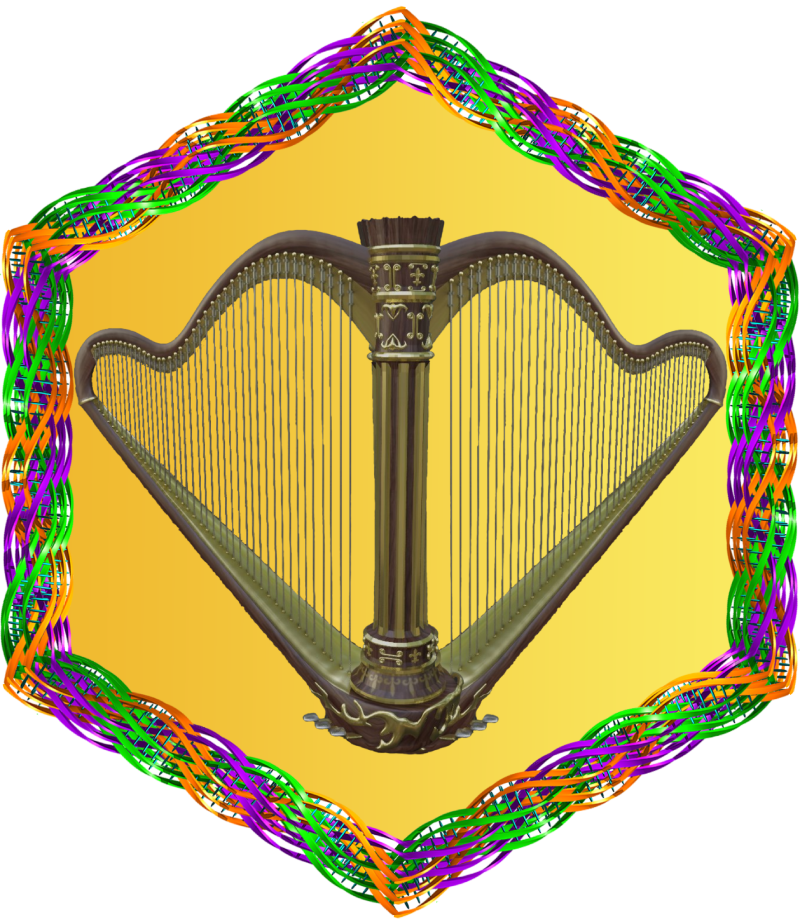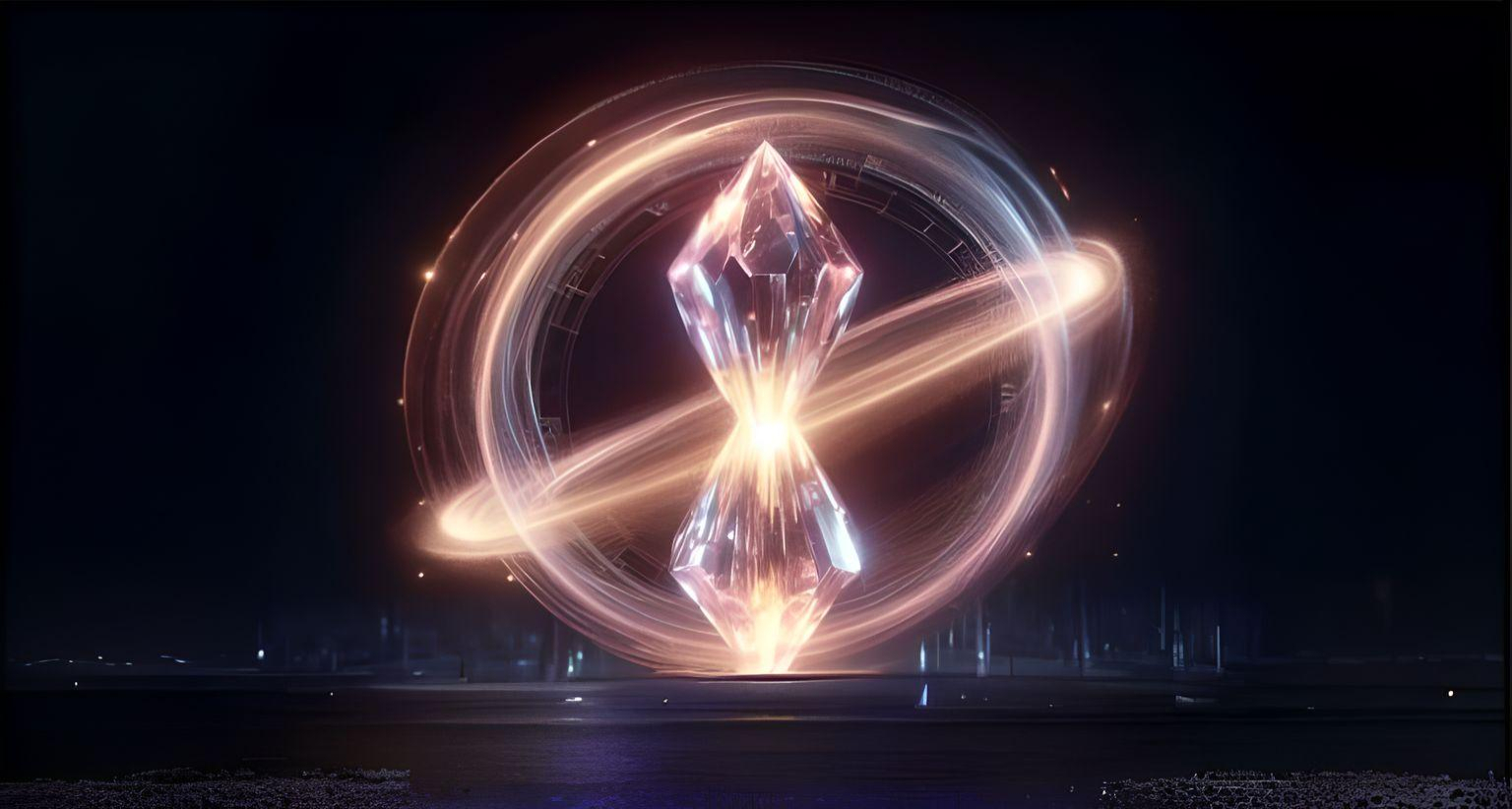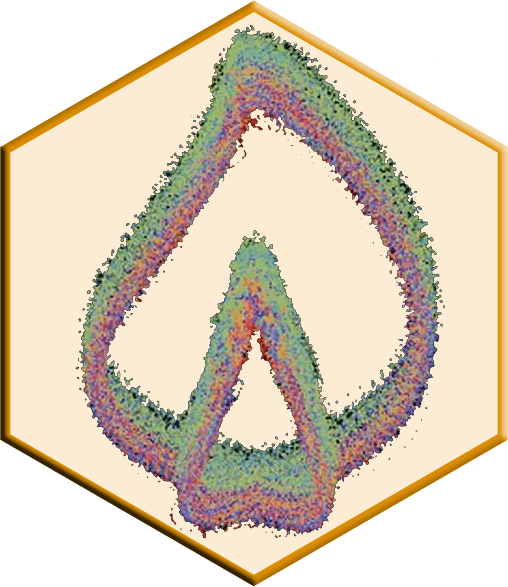
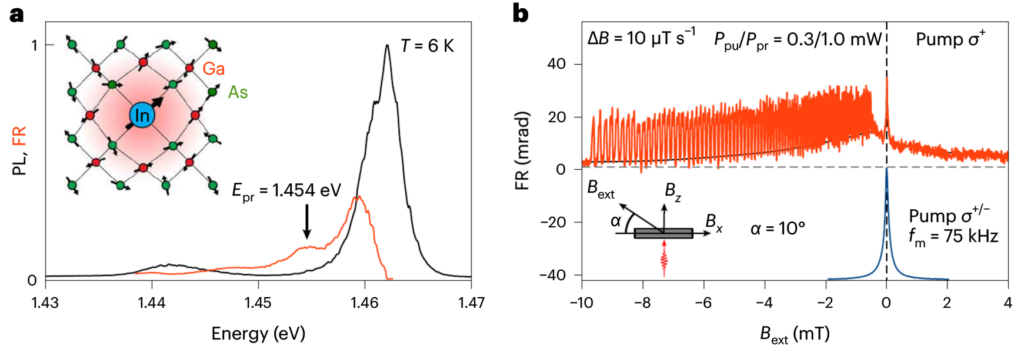
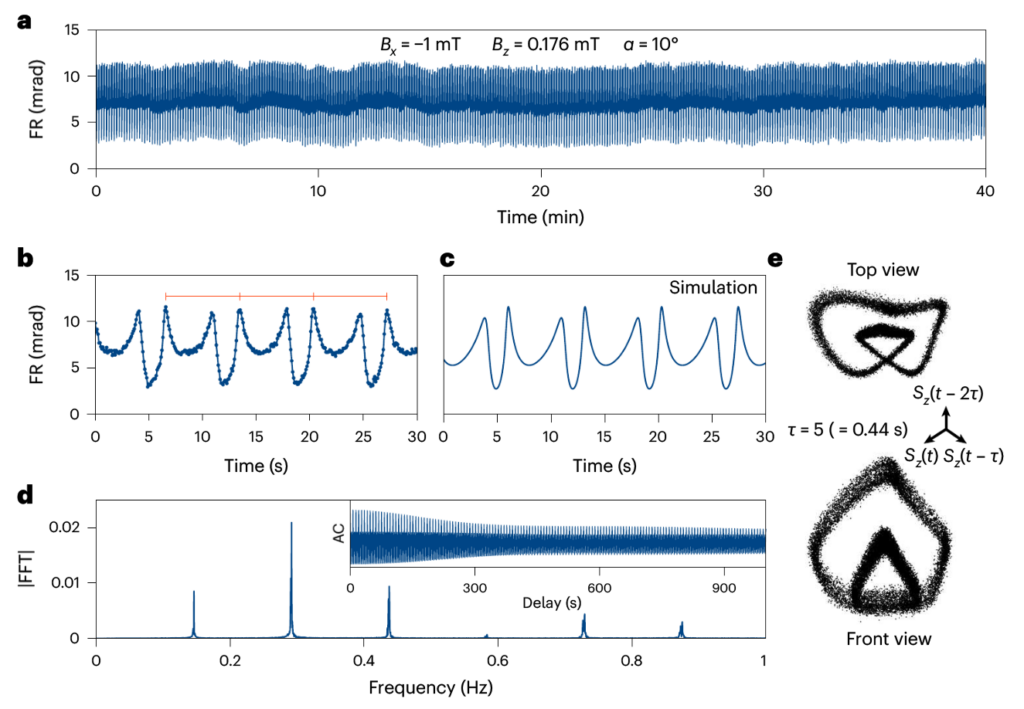
(a) Electron spin polarization changes over time, observed with specific light and magnetic field settings.
(b) A detailed view of the oscillation’s initial 30 seconds, highlighting the CTC’s regular oscillation pattern.
(c) A model predicting these oscillations based on specific parameters.
(d) Analysis of the oscillation patterns using Fast Fourier Transform (FFT) and autocorrelation.
(e) A 3D graph showing the spin polarization dynamics.
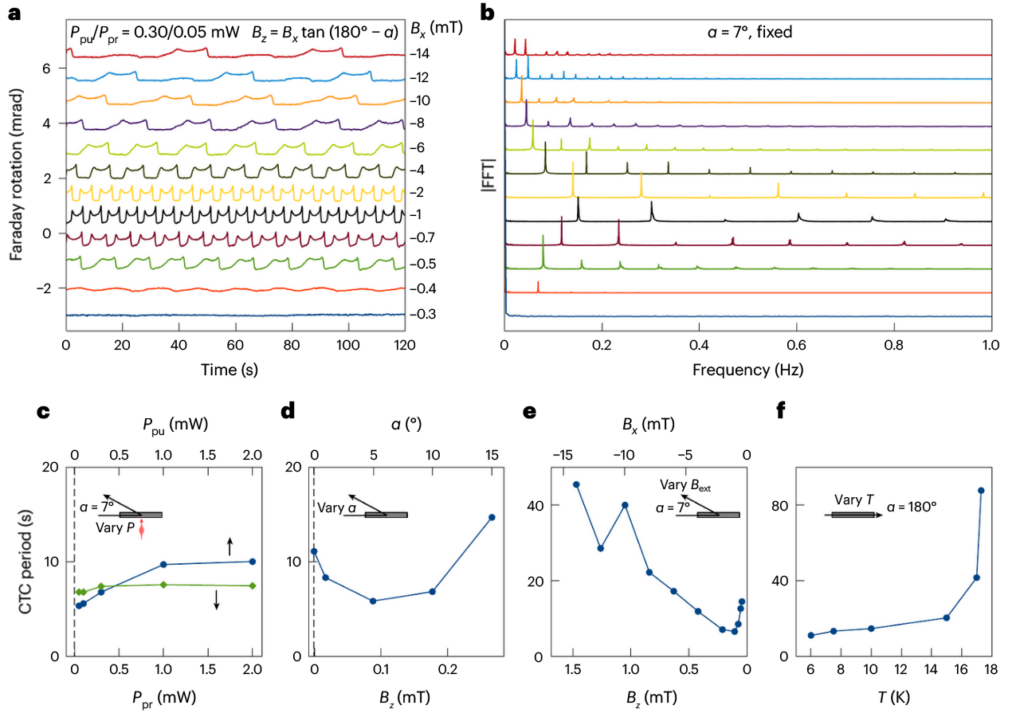
(a) Shows time patterns at a fixed tilt with different magnetic field strengths, at 6 K temperature.
(b) FFT analysis of these patterns to identify frequency characteristics.
(c) Illustrates the CTC period’s response to changes in probe and pump power under specific conditions.
(d) Examines the CTC period with varying vertical magnetic fields at a constant horizontal field, highlighting the effect of angle.
(e) Details the period’s dependence on magnetic field strength at a steady tilt.
(f) Looks at how the CTC period changes with temperature, under defined magnetic and power conditions.
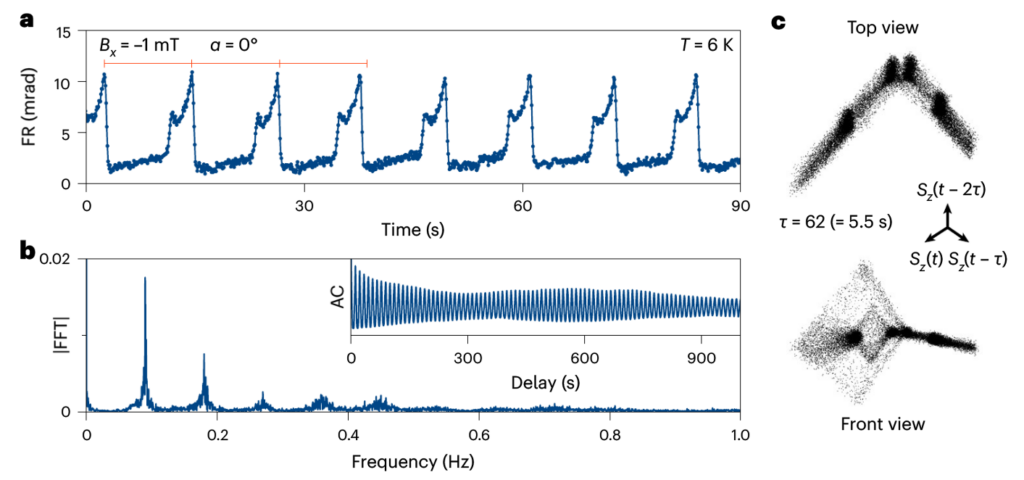
(a) Displays the oscillations of electron spin polarization in the Faraday rotation (FR) signal under a horizontal magnetic field (Bx = −1 mT, Bz = 0 mT, α = 0°), highlighting irregular peak behavior.
(b) Shows the analysis of these oscillations using Fast Fourier Transform (FFT) and autocorrelation to study their pattern over time.
(c) Provides top and front views of the spin polarization’s oscillation pattern, or phase portrait, over a span of 5.5 seconds (62 time steps).
In a groundbreaking study published in Nature Physics, a team from the Technical University of Dortmund, Germany, has established a new benchmark by creating a “time crystal” with a longevity millions of times greater than any previously observed. Unlike conventional crystals, which exhibit a repeating atomic structure in space, time crystals display periodic changes in state over time, a concept first theorized by Nobel Prize-winning physicist Frank Wilczek in 2012. This notion, blending elements of science fiction and advanced physics, suggests the existence of structures that repeat not in space, but in time, inspired by the interwoven nature of space and time in Einstein’s theory of special relativity [1].
The Dortmund team’s time crystal, crafted from a specially prepared semiconductor, marks a significant advancement in the field by achieving a stable state for at least 40 minutes, potentially much longer, which is about 10 million times the lifespan of previous time crystals. This achievement not only surpasses Wilczek’s initial proposal but also opens the door to practical applications for time crystals in technology and beyond.
The realization of such durable time crystals represents a crucial step towards harnessing these structures for real-world uses. As Krzysztof Sacha, a notable researcher not involved in the study, points out, the challenge now lies in not only creating and controlling these time crystals but also in finding innovative applications for them. The hope is that time crystals will transcend their novel appeal and find utility in creating practical devices, thereby marking a significant leap in the experimental realization and control of these fascinating phenomena [2].
Researchers have developed a system known as the Electron-Nuclear Spin System (ENSS), a spin-based Continuous Time Crystal (CTC), from a specific mix of indium, gallium, and arsenic. This ENSS excels in repeating patterns over time with remarkable stability and is highly sensitive to small changes in its environment, such as variations in magnetic fields, temperature, or light exposure. This sensitivity has potential benefits for devices and technologies integrated onto microchips, offering insights into microscopic movements and transitions. However, caution is necessary as adjusting its settings beyond certain limits may induce unpredictable behavior. A notable feature of the ENSS is its capability to function like a slow-motion clock, which could prove valuable in tracking slow processes in materials or during chemical reactions. Further investigations are being conducted on how alterations in light exposure could open up new technological applications.
The discovery and exploration of time crystals have opened up new avenues for understanding the nature of time, matter, and quantum phenomena. Time crystals challenge the conventional notions of symmetry, equilibrium, and thermodynamics, and reveal the rich diversity and complexity of quantum phases of matter. Time crystals also offer new possibilities for developing novel devices and technologies that exploit their unique properties and dynamics. For instance, time crystals could be used as quantum memory, sensors, clocks, or metrological standards, as well as platforms for quantum simulation and computation. However, many questions and challenges remain for the theoretical and experimental investigation of time crystals, such as their classification, characterization, robustness, and universality. Moreover, the ethical and social implications of creating and manipulating time crystals need to be carefully considered and addressed. Time crystals are a fascinating and promising frontier of physics that will undoubtedly inspire further research and innovation in the years to come [3, 4].
[1] Greilich, et al., “Robust continuous time crystal in an electron–nuclear spin system“, Nature Physics, 24 January 2024
[2] Aristos Georgiou, “‘Time Crystal’ That Breaks Endurance Record Created by Physicists“, Neesweek, Feb 07, 2024
[3] Kubota, T. (2021, November 30). Stanford physicists help create time crystals with quantum computers. Stanford News. Retrieved from https://news.stanford.edu
[4] Keßler, H., Kongkhambut, P., Georges, C., Mathey, L., Cosme, J.G., & Hemmerich, A. (2021). Observation of a Dissipative Time Crystal. Physical Review Letters, 127(4), 043602. https://doi.org/10.1103/PhysRevLett.127.043602
